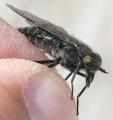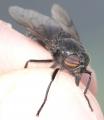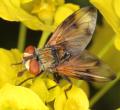Diptera.info :: Identification queries :: Diptera (adults)
Who is here? 1 guest(s)
Page 2 of 2: 12
|
|
Tachinidae - Therobia leonidei
|
|
| jorgemotalmeida |
Posted on 13-09-2007 21:12
|
|
Member Location: Viseu - PORTUGAL Posts: 9296 Joined: 05.06.06 |
head lateral shot.. very peculiar antennas for tachinid.. jorgemotalmeida attached the following image: 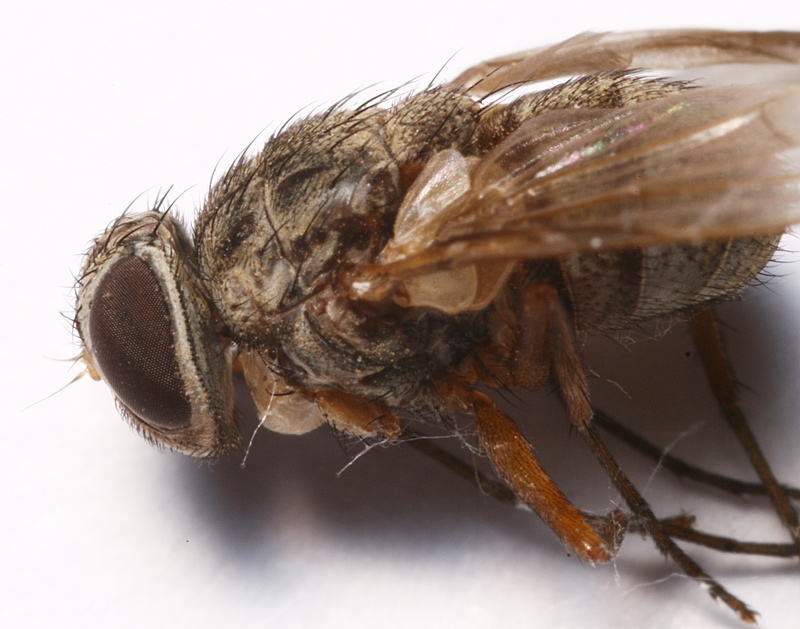 [188.25Kb] |
| jorgemotalmeida |
Posted on 13-09-2007 21:18
|
|
Member Location: Viseu - PORTUGAL Posts: 9296 Joined: 05.06.06 |
other...
jorgemotalmeida attached the following image: 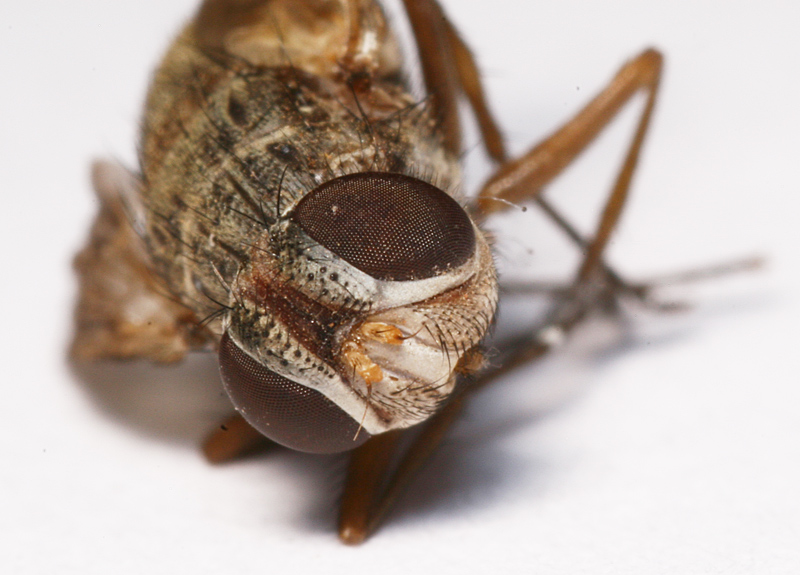 [188.83Kb] |
| jorgemotalmeida |
Posted on 13-09-2007 21:24
|
|
Member Location: Viseu - PORTUGAL Posts: 9296 Joined: 05.06.06 |
it seems that the antennas have 2 arista??  I never saw anything like that. See the second segment, and then the third...  |
| Zeegers |
Posted on 14-09-2007 07:39
|
|
Member Location: Soest, NL Posts: 18976 Joined: 21.07.04 |
Thank, this confirms my educated guess: Therobia leonidei, in the incredible tribe Ormiini. These are parasitoids of grasshoppers. The tachinid finds the host by ... sound ! If you are so stupid to make so much noise, I will find you ! Moreover, these are nocturnal How was this one found ? Theo |
|
|
|
| jorgemotalmeida |
Posted on 14-09-2007 10:32
|
|
Member Location: Viseu - PORTUGAL Posts: 9296 Joined: 05.06.06 |
wow! thanks!! and IT FITS very well. I was near Castelo Branco with some friends of mine. We went to a field for catching moths/flies during... the night! We used very strong mercury bulb lamps (160 W and 130 W) during all the night. There were many flies attracted by light. After 2 am there were no flies anymore. And, there are many grasshopers/crickets over there. Edited by jorgemotalmeida on 14-09-2007 11:57 |
| jorgemotalmeida |
Posted on 14-09-2007 10:33
|
|
Member Location: Viseu - PORTUGAL Posts: 9296 Joined: 05.06.06 |
what has in special the tribe Orminii?  The peculiar way that M vein bends? Or maybe... nocturnal habits? I thought that just a few flies could have nocturnal habits... like Keroplatidae. Edited by jorgemotalmeida on 14-09-2007 11:15 |
| jorgemotalmeida |
Posted on 14-09-2007 11:17
|
|
Member Location: Viseu - PORTUGAL Posts: 9296 Joined: 05.06.06 |
interesting: "In the genus Poecilimon (Orthoptera: Phaneropterinae) males are attacked by the parasitoid fly Therobia leonidei (Diptera: Tachinidae: Ormiini) which locates males by their calls. In Greece T. leonidei parasitizes several Poecilimon species with different song structures: we examined whether host choice is related to song structure by comparing parasitism rates in two closely related Poecilimon species. One of these species produces monosyllabic songs, the songs of the other species being polysyllabic. The tachinid fly parasitized the polysyllabic species to a greater extent. We demonstrate in a field-experiment that this preference for the polysyllabic species does not depend on local adaptations of the fly. The most probable explanation for the preference of the fly for the polysyllabic singing species seems to be better detection of longer songs. This result is discussed in the context of male song evolution." in http://cat.inist....dt=2356025 |
| Rui Andrade |
Posted on 14-09-2007 12:49
|
|
Member Location: Portugal Posts: 3123 Joined: 19.06.07 |
Zeegers wrote: Thank, this confirms my educated guess: Therobia leonidei, in the incredible tribe Ormiini. These are parasitoids of grasshoppers. The tachinid finds the host by ... sound ! If you are so stupid to make so much noise, I will find you ! Moreover, these are nocturnal Wow  !!!! Find an host by hearing the sound, incredibly fascinating !!!! Find an host by hearing the sound, incredibly fascinating !!! And nocturnal activity? Amazing!!! !!! And nocturnal activity? Amazing!!!jorgemotalmeida wrote: interesting: "In the genus Poecilimon (Orthoptera: Phaneropterinae) males are attacked by the parasitoid fly Therobia leonidei (Diptera: Tachinidae: Ormiini) which locates males by their calls. In Greece T. leonidei parasitizes several Poecilimon species with different song structures: we examined whether host choice is related to song structure by comparing parasitism rates in two closely related Poecilimon species. One of these species produces monosyllabic songs, the songs of the other species being polysyllabic. The tachinid fly parasitized the polysyllabic species to a greater extent. We demonstrate in a field-experiment that this preference for the polysyllabic species does not depend on local adaptations of the fly. The most probable explanation for the preference of the fly for the polysyllabic singing species seems to be better detection of longer songs. This result is discussed in the context of male song evolution." in http://cat.inist....dt=2356025 Spectacular  !!! !!! |
Page 2 of 2: 12
| Jump to Forum: |


